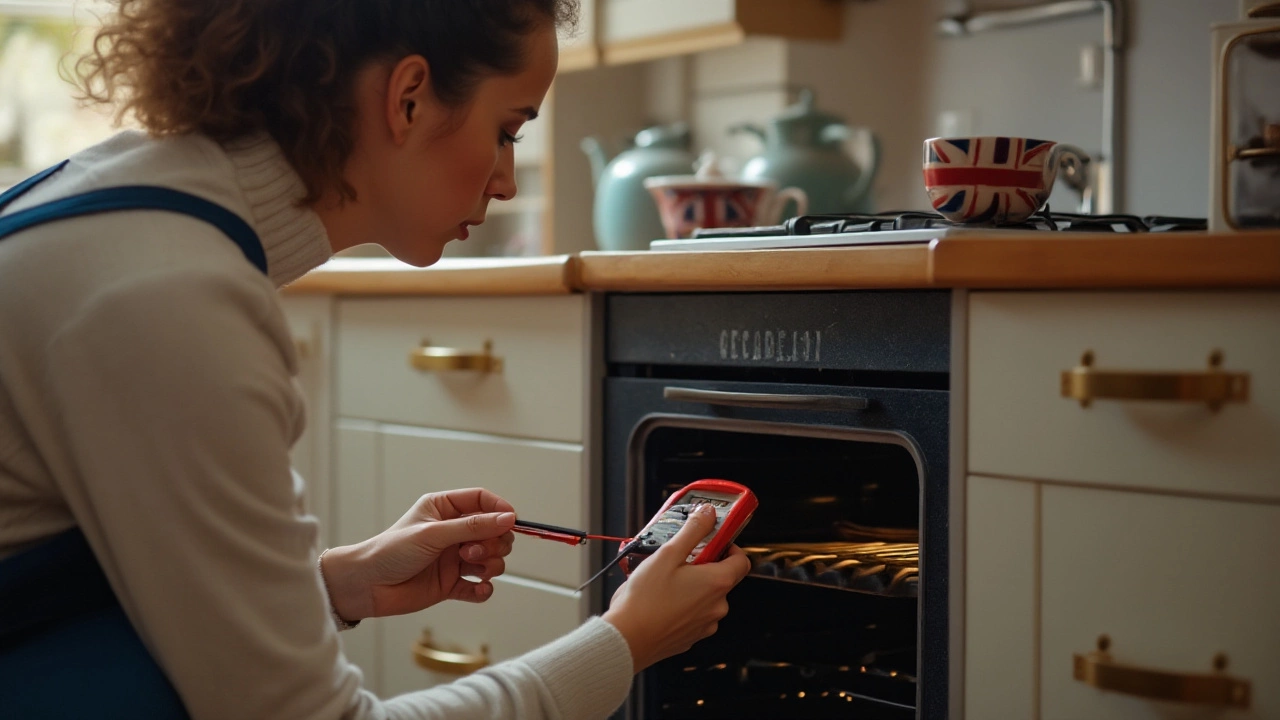Oven Element Guide: What It Is, How It Fails, and When to Fix It
If your oven isn’t heating up, the first thing to suspect is the heating element. This metal coil (or ceramic tube) turns electric power into the high heat you need for baking, roasting, and more. When it’s working, you barely notice it; when it’s not, you end up with under‑cooked meals and a lot of frustration.
Quick Signs Your Oven Element Is Bad
Before you call a technician, run a quick visual check. Turn the oven on and look at the element – it should glow red. If it stays cool, flickers, or has visible cracks, it’s probably dead. Other clues include uneven cooking, a sudden “no heat” error on the display, or a distinct burning smell. If you notice any of these, the element is the usual culprit.
DIY Tests and Simple Fixes
Most homeowners can run a basic continuity test with a multimeter. Unplug the oven, remove the element (usually a few screws), and place the meter’s probes on the element’s terminals. A steady beep means the coil is still intact; silence means it’s broken and needs replacing. If the element passes the test but the oven still won’t heat, the problem may lie in the thermostat or wiring.
When you decide to replace the element, make sure you order the exact model – oven manufacturers use different sizes and connections. Installation is straightforward: disconnect the power, remove the old coil, attach the new one, and secure it with the original screws. Re‑connect the power and test the oven on a bake setting to confirm the new element glows and heats properly.
Even if you’re comfortable with basic DIY, safety comes first. Always turn off the circuit at the breaker, and if you feel unsure about any step, it’s smarter to call a local Glastonbury repair service. They have the right tools and can spot hidden issues like faulty wiring that could cause sparks later on.
Once the element is working, keep it in good shape with a few maintenance habits. Wipe away any food splatters before they bake onto the coil – baked‑on residue can cause hot spots and reduce the element’s lifespan. Avoid using harsh abrasive cleaners; a soft damp cloth is enough. And give the oven a quick visual inspection every few months to catch early signs of wear.
Got more oven headaches? Check out our Oven Troubleshooting Guide for tips on temperature inaccuracies, door seal problems, and error codes. Whether you’re dealing with a 10‑year‑old oven or a brand‑new model, the right knowledge saves time, money, and the taste of half‑baked casseroles.
Remember, a healthy oven element means consistent heat, better cooking results, and fewer emergency repair calls. Keep an eye on the signs, test when you can, and don’t hesitate to get professional help if the job feels beyond your skill set. Your oven will thank you with perfectly baked pies every time.

Identifying Broken Oven Elements or Thermostats for Effective Repairs
Wondering whether your electric oven’s issue is due to a faulty element or a broken thermostat? This comprehensive guide outlines simple steps to diagnose the problem, helping you figure out if your oven's heating element or its thermostat is malfunctioning. Learn the signs of each problem, the tools you'll need for testing, and useful tips for maintenance. Uncover ways to fix common issues yourself before calling in professional help, saving you time and money.